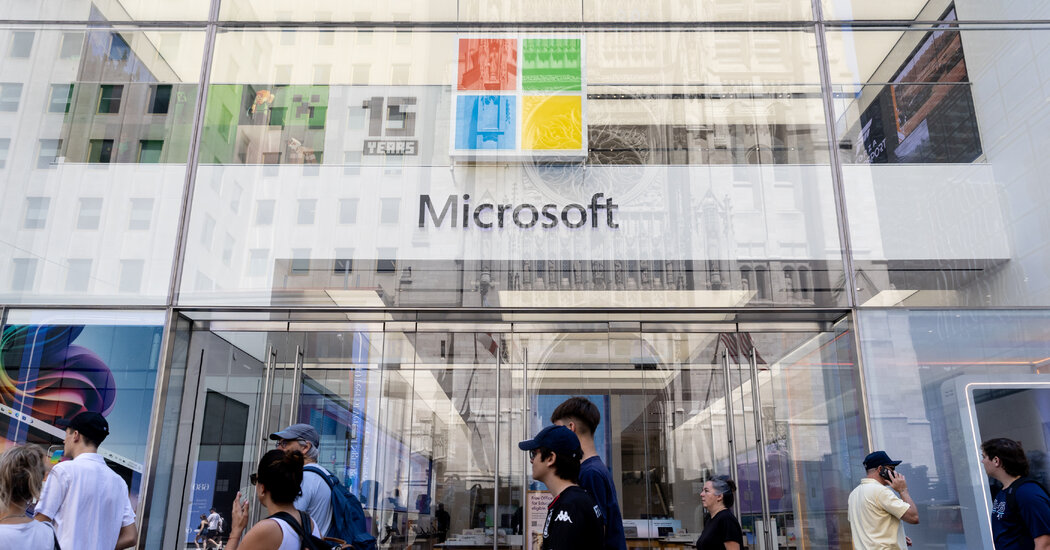Microsoft poured $88 billion into building data centers for artificial intelligence and cloud computing over the past year, and financial results it released on Wednesday show the investments are starting to pay off.
Sales topped $76.4 billion from April through June, up 18 percent from the same period a year earlier, according to the quarterly results. Profit rose to $27.2 billion, up 24 percent. The results surpassed Wall Street’s expectations, and Microsoft’s share price was up more than 6 percent in aftermarket trading.
Microsoft’s aggressive moves to pursue A.I., most critically through its partnership with the start-up OpenAI, has produced a revival of Azure, its flagship cloud computing services. The company for the first time released revenue for Azure, sharing that it topped $75 billion in the past year.
Two years ago, Azure and other cloud services were growing 26 percent in the same quarter. Now, even though Azure has become a much larger business, it grew 39 percent.
“Cloud and A.I. is the driving force of business transformation across every industry and sector,” Satya Nadella, Microsoft’s chief executive, said in a statement.
The company has been racing to get enough data centers in operation. It has been telling investors for the past several quarters that it has more demand for its services than data centers to deliver cloud computing and A.I. services.
(The New York Times has sued OpenAI and Microsoft, claiming copyright infringement of news content related to A.I. systems. The two companies have denied the suit’s claims.)
Commercial sales for Microsoft’s online productivity tools for businesses, including Excel, Teams and Word, grew 18 percent. The figure also includes sales of its corporate A.I. assistant called Copilot.
Microsoft’s personal computing business had $13.5 billion in sales. That included 3 percent growth in the sales of Windows installed on new personal computers.
Part of the growth is thanks to the surprising resilience of laptop sales. Earlier this year, manufacturers had been rushing to make more PCs before tariffs took effect, which some analysts thought would result in a short-term surge in sales. But the global PC market has remained strong. Personal computer shipments to the United States were flat from April through June, reflecting a decline in demand over tariffs, though elsewhere in the world sales grew 9 percent, according to the research firm IDC.
Microsoft ended its fiscal year with 228,000 employees, the same as a year ago. The company laid off 6,000 people in May, and another 9,000 this month.
In a note to employees last week, Mr. Nadella said he understood the frustration over the layoffs despite the fact that “by every objective measure, Microsoft is thriving.” He called the contradiction, “the enigma of success.”
Karen Weise writes about technology for The Times and is based in Seattle. Her coverage focuses on Amazon and Microsoft, two of the most powerful companies in America.
The post Microsoft Backs Up A.I. Spending With $27.2 Billion Quarterly Profit appeared first on New York Times.




